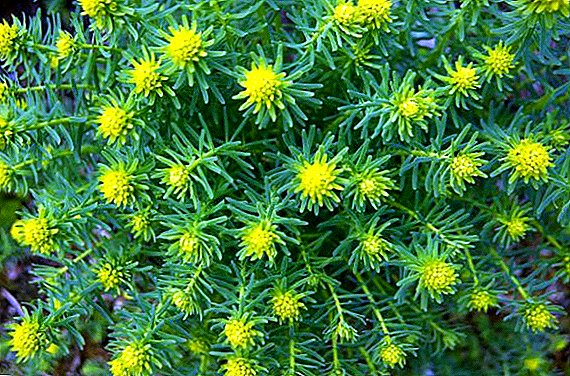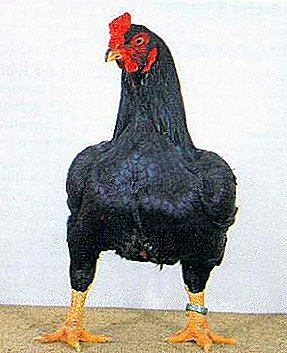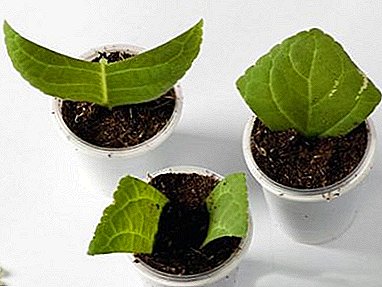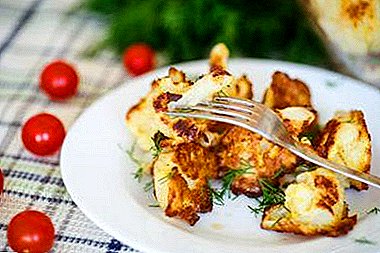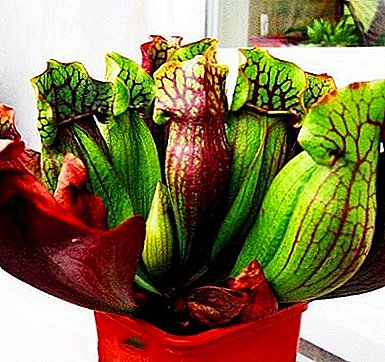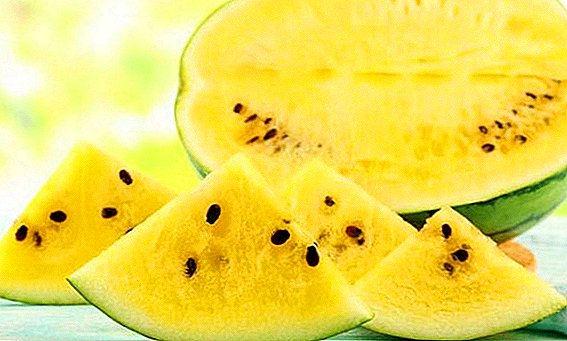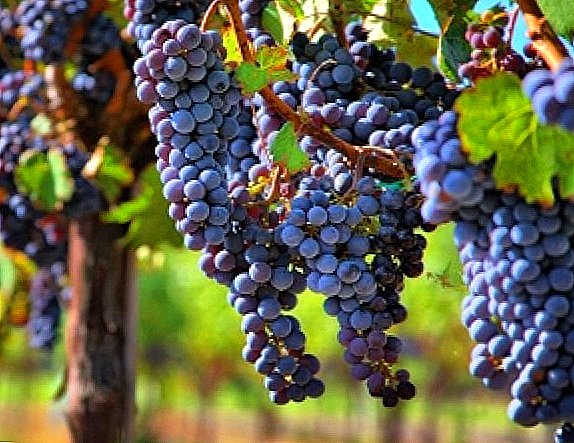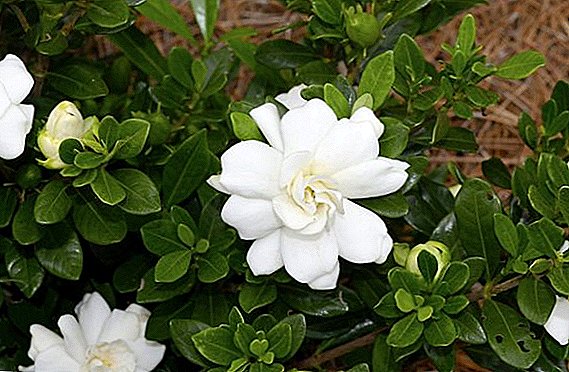 For all connoisseurs of exotic tropical plants, gardenia will become a real decoration of the house and garden, the main thing is to choose the appropriate variety.
For all connoisseurs of exotic tropical plants, gardenia will become a real decoration of the house and garden, the main thing is to choose the appropriate variety.
Each type has its own characteristics, so before making the final choice it is worth considering each of them.
Main types
Among the plants called "gardenia" there are deciduous and evergreen specimens, presented in the form of small bushes, voluminous shrubs or even tree-like varieties with flowers of different color. We offer to consider the most popular of the species.
Jasmine or Augusta
This variety is most common in home grown. The second name of the plant is Cape jasmine, and in its natural habitat it is an evergreen shrub up to 2 m high. Of course, the indoor options are much lower, so you shouldn’t hope that the jasmine gardenia will grow above 50-60 cm.
Learn the secrets of the successful cultivation of gardenia jasminoid.
Flowers of this species are double, mostly white, single. Leaves - dense, rich green color, with a slight taper on the tips. In length, they grow up to 8 cm and in combination with large flowers look very impressive.  Today there are many varietal variations of gardenia Augustus, so each gardener can choose the most appropriate option, given the color of flowers and the height of the culture itself.
Today there are many varietal variations of gardenia Augustus, so each gardener can choose the most appropriate option, given the color of flowers and the height of the culture itself.
Did you know? In addition to high decorative properties, gardenia has a lot of useful components that are used in Asian countries for the care of the oral cavity and for the treatment of skin diseases. For this purpose, apply infusions, ointments and decoctions based on leaves and flowers, which have anti-inflammatory, wound healing properties.
Hawaiian, or forest
Forest gardenia is unlikely to please you with frequent and lush flowering, because the flowers are formed on it is extremely rare. In its natural habitat, this species has practically disappeared, therefore, white flowers formed by 6-7 petals can only be seen in some home greenhouses. The leaves of the Hawaiian gardenia are oval, light green in color with well-pronounced symmetrical veins (somewhat resemble walnut leaves).  During flowering, this variety can be found on the pleasant and delicate smell emanating from the flowers.
During flowering, this variety can be found on the pleasant and delicate smell emanating from the flowers.
Vietnamese
This variety differs from the others in unusual white flowers in the shape of stars, whose diameter reaches 8 cm. Each petal has a tubular base and is located at some distance from the neighboring ones, and in the central part of the "star" there is a convex yellow core, which only adds to the unusual appearance. The leaves are light green, oval, with clearly visible veins and a slight bend of the edges inwards along the entire length of the leaf plate. This option is more suitable for growing in room conditions. 
Thunberg
Gardenia Thunberg is an evergreen shrub or a small tree with a very pleasant aroma during flowering. The leaf plates are large, dark green, located on short branches of the woody stem part. The same large, 8-centimeter white flowers resemble an open fan in their structure and look very impressive against the background of green foliage. In the natural habitat of gardenia Thunberg grows up to 7 m in height, therefore, even when grown at home, it is often used for breeding purposes as a stock. 
Did you know? This variety got its name in honor of the Swedish scientist K. P. Thunberg, who put a lot of effort into studying the characteristics and characteristics of this species.
Tahitian
Tiare (Tahitian gardenia) in the wild is found on the territory of the Pacific region, where it is widely used by the inhabitants of the islands to produce aromatic oils. It is truly one of the most beautiful plants on earth with white and yellow flowers, characterized by a wonderful aroma. All of them are single, consist of 7 petals with the edges bent down. Leaf plates - a standard green color, oval-shaped with clearly visible streaks. 
Forchuna
One of the main characteristics of this type of gardenia is the large size of white flowers. The appearance of the bush resembles a rose bush, with multi-layered flowers and relatively small, dark green oval-pointed leaves. The opening bud of the plant looks very voluminous due to the close location of slightly wavy petals. Unlike other options, the middle of flowers in this form is not so clearly marked, but this does not reduce the overall decorativeness of the plant.
Unlike other options, the middle of flowers in this form is not so clearly marked, but this does not reduce the overall decorativeness of the plant.
Important! When watering Forchun’s gardenia, do not be intimidated by the aroma of black pepper. This is a characteristic feature of this species.
Citriodora
The plant is presented in the form of a shrub, with unusual white flowers with five petals. All of them are gathered around the yellowish middle, with which they do not exceed 2 cm in diameter. Leaf plates are quite ordinary: oval, rich green in color, with well-marked veins. You can grow citriodor in pots or in containers placed around the perimeter of the house, from where it will emit a pleasant orange aroma. 
Radicance
Like the previous version, Gardenia Radikans is a small bushes, with motley or green succulent leaves. The total height of the plant is not more than 1 m in height and 1.2 m in width. Terry flowers also do not differ in significant size and grow only up to 2-5 cm in diameter. Leaf plates are small, oval and glossy, but there is a lot of them on one branch, due to which the impression of bulkiness of a bush is created. It is because of this feature that the Radikans type is most often used in the role of "bonsai". 
Kula
This type of gardenia is significantly different from all previous versions, and above all with its large yellow color flowers, which look like a propeller in appearance. The height of the bushes reach a height of 2.5 m, so they can only be grown in the garden or in a room with very high ceilings. With proper care, gardenia Kula will delight you with uninterrupted flowering throughout the spring. 
Important! When watering the plant, try not to allow water to enter the open flowers. From this, they often lose their high decoration.
Memo Florist
Regardless of the type of gardenia you choose, any plant will need competent care, otherwise it will not be possible to achieve abundant and lush flowering of exotic shrubs. First of all, you should pay attention to:
- Lighting level Gardenias prefer a well-lit room in the sun, however, in order to avoid leaf fading, you will have to shade the windows with curtains, thereby dissipating streams of light. On average, the length of daylight hours for exotic guests should be at least 12-14 hours, so in the winter time it is recommended to move the pot closer to the window or finish lighting the bushes with special fitolamps.
- Temperature values. Given the tropical origin of gardenia, you should not lower the temperature at the place of its cultivation to + 16 ° C and below. In the summer, the bushes grow well with values of + 20 ... + 25 ° C, and in the cold period they can be reduced to + 17 ... + 18 ° C. Moreover, any temperature changes should be smooth, without sudden changes in any direction.
- Watering. Abundant and regular soil moistening is more relevant for gardenia in the summer, and when the temperature drops, the frequency of watering is reduced to once per 1-1.5 weeks. In general, it is possible to determine the need for the next moistening of the substrate according to the condition of the upper soil layer: it should not dry out more than 1 cm, always remaining slightly wet. For irrigation, it is desirable to use only separated and filtered liquid at room temperature. Well if instead of tap water rain will be collected.
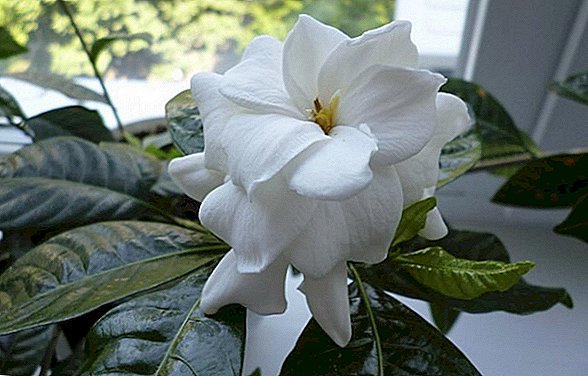
- Feeding. Fertilizers are applied under gardenia twice a month, starting in March and ending in the last summer month. At other times, they are not required, and sometimes even harmful, since an excessive amount of nutrients in the soil can lead to disruption of flowering. Regarding the type of fertilizer, it is best to give preference to complex mineral compositions for ornamental flowering crops, mixing with irrigation liquid half, from the recommended dose by the manufacturer.
- Crop. All types of gardenia perfectly tolerate the trimming procedure, which allows you to give the bush or tree the desired shape. Sometimes flower growers even weave several shoots into one sturdy stem, forming a bonsai. In spring, at least 50-60% of the shoots are removed from the plant, and the young shoots pinch.
- Transfer. Up to the age of three, young plants need an annual transplant with a complete replacement of the soil in the pot. Older specimens can be transplanted into a larger pot no more than 1 time in 2-3 years, using a weakly acidic and loose substrate.
Read more about the features of growing gardenia at home.
Observing all the requirements for growing gardenia, you will never have problems with this exotic plant, you will only enjoy its beautiful flowering and pleasant aroma.



